





A subspecialty of ophthalmology called pediatric ophthalmology is dedicated to treating children's visual problems and eye health. In pediatric ophthalmology, squint, commonly referred to as strabismus, is a prevalent disorder.
Pediatric Ophthalmologist: A pediatric ophthalmologist is a medical professional who has completed training in treating eye disorders in children. They are qualified to identify and manage a variety of childhood-related eye diseases, including strabismus (squint), amblyopia (lazy eye), and refractive abnormalities.
Squint (Strabismus): In an eye squint occurs when one eye turns inward, outward, upward, or downward, while the other eye maintains a straight line of sight. It may develop later in infancy may be congenital, meaning it is present from birth. Amblyopia, a condition in which the brain prefers one eye over the other and reduces vision in the weaker eye, can be brought on by squinting.
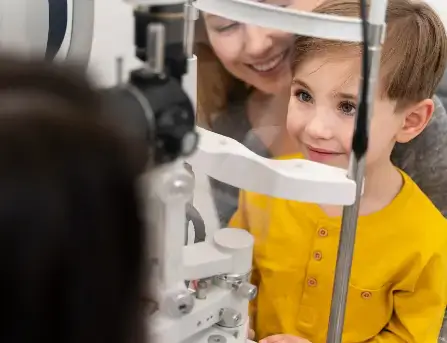
Pediatric ophthalmologists evaluate a child's eyesight, alignment of the eyes, and general health of the eyes using a variety of tests. To diagnose and assess squint, cover-uncover tests, eye movement tests, and refraction tests are frequently employed.
A comprehensive examination is required for the diagnosis and evaluation of a child's eyes in order to determine the state of their vision and spot any possible problems. Early detection and treatment of visual impairments are essential for healthy development and the avoidance of long-term consequences.
These are some important facets of the diagnosis and assessment of children's eyes.
Comprehensive Eye Exam: An ophthalmologist or optometrist, among other eye care specialists, should do a thorough examination of the eyes. Visual acuity, refractive error (nearsightedness, farsightedness, or astigmatism), eye muscle coordination, depth perception, and color vision tests might all be part of the examination.
Visual Acuity Testing: An eye chart with letters or symbols on it is commonly used to quantify visual acuity, which is a measure of how clear one's eyesight is. Certain charts with images or symbols may be utilized for younger children or those who are not yet able to read.
Refraction Assessment: Refraction tests quantify a kid's nearsightedness, farsightedness, or astigmatism and decide whether the youngster requires glasses. To find the child's prescription, the eye care specialist may utilize an autorefractor or phoropter.
Eye Alignment and Movement: Analyzing how the eyes move and align can help detect conditions including amblyopia (lazy eye) and strabismus (misalignment). Exercises like follow-the-finger and cover-uncover tests can be used to evaluate eye tracking and coordination.
Pupil Response and Accommodation: The eye care specialist may measure the pupils' reaction to light and evaluate the eyes' capacity for close-up and far-away object focus.
Eye Health Examination: The exterior and interior anatomy of the eyes are examined as part of the eye health examination. This entails looking for anomalies or indications of illness on the cornea, iris, lens, retina, and optic nerve.
Color Vision Testing: To determine color blindness or other problems, color vision tests may be done.
Assessment of Binocular Vision: Tests of binocular vision evaluate how effectively the eyes cooperate to produce a single, sharp image and depth perception.
Monitoring and Follow-up: It's crucial to get regular eye exams to track a child's eyesight development. If any problems are found or if the child's vision changes, follow-up visits can be advised.
Educating Parents and Caregivers: The significance of maintaining good eye health, the warning indicators of possible vision issues, and the necessity of routine eye exams should all be explained to parents and other caregivers.
The underlying cause and degree of squint, also known as strabismus, determines the course of therapy. One eye that is squinted looks in a different direction than the other due to improper ocular alignment.

1 Glasses
1.Sometimes straightening the eyes can be achieved with the use of corrective glasses. Glasses can help if the squint is brought on by refractive defects such astigmatism, farsightedness, or nearsightedness.
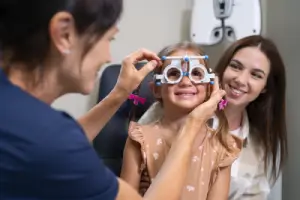
2 Vision Therapy
2. Exercises and activities aimed at strengthening the eye muscles and enhancing eye coordination are part of vision therapy. This treatment is frequently used to teach the eyes to cooperate, particularly in young patients.
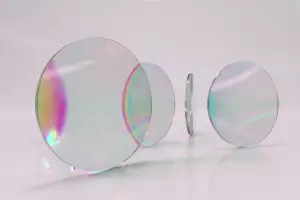
3 Prism Lenses
3. It is possible to enhance alignment and divert the light entering the eyes with prism lenses. To reduce double vision and enhance the visual axis, these lenses can be placed on spectacles.
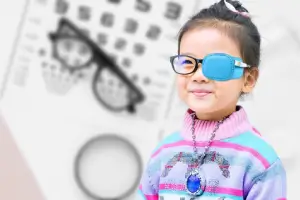
4 Patch Therapy
4.Patching is a popular therapy for amblyopia, or lazy eye, which is occasionally connected to squinting. The weaker eye's visual acuity improves when the stronger eye is patched.
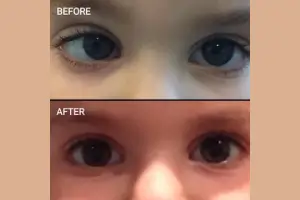
5 Botox Injections
5.Sometimes the eyes can be correctly aligned by temporarily weakening some eye muscles with Botox injections. This is usually a temporary fix that might need to be done again.
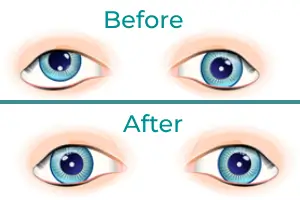
6 Surgery
Surgery could be suggested if non-surgical treatments are ineffective or if the squint is very severe. To enhance eye alignment, surgery may be required to change the length or location of the eye muscles.
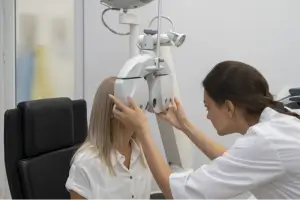
7 Combination Therapies
A mix of therapies, such as glasses, vision therapy, and surgery, may occasionally be advised.
Follow-up Care
The effective treatment of pediatric eye disorders, such as squint, depends on early identification and intervention. Early intervention can help avoid long-term visual issues and enhance the child's quality of life in general.
A pediatric ophthalmologist must see the kid on a regular basis to assess eye health and guarantee normal vision development. Over time, it can be required to get new treatments, modify the prescription, or make adjustments to the glasses.